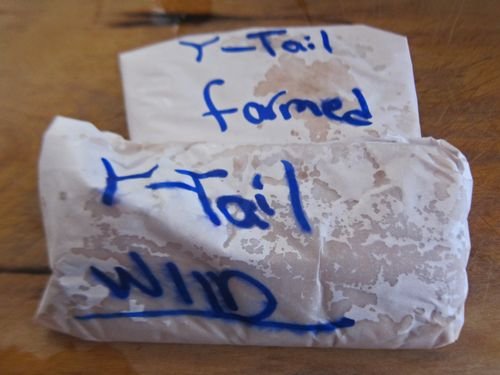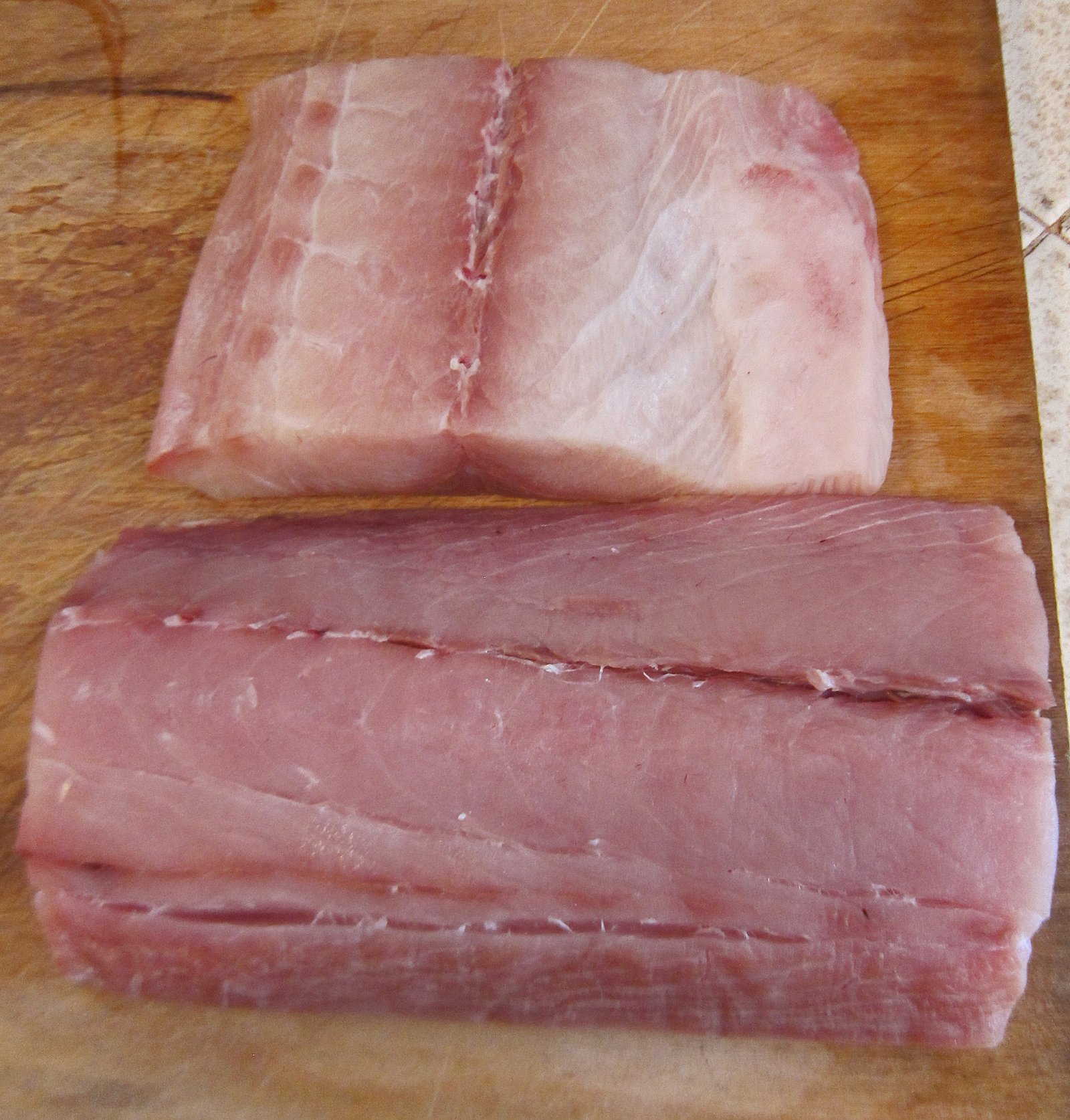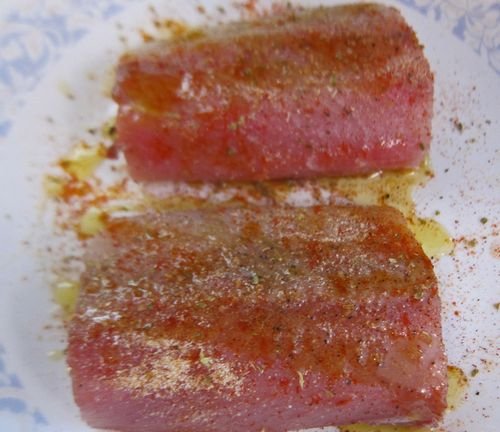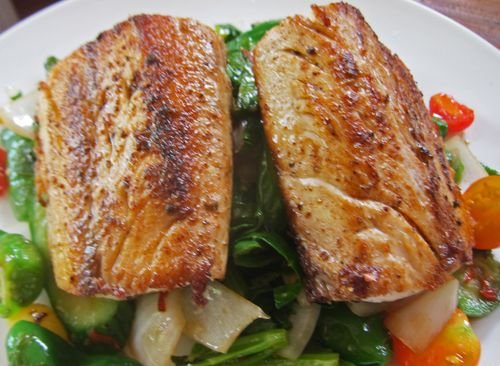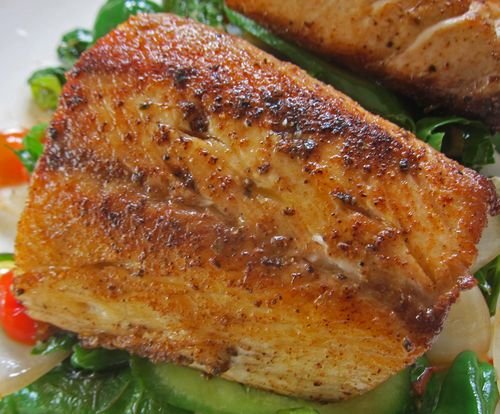On one of my trips to Catalina Offshore, I noticed two different trays of what was called "Yellowtail", which really didn't resemble Japanese Amberjack or Greater Amberjack (Kanpachi) which I'm familiar with. In fact, the two fish, which I was told are of the same species, did not even look related at all. One tray was the "wild", which was/is running at the time, the other was farmed in from Baja.
I mentioned this to Tommy, which also made it clear what kind of Amberjack this was when he told me the Japanese name….Hiramasa. Since there was a large price difference between the two, I asked him what the real difference was? His response? "You should get some of each and compare…." Which is what I did.
They were nice enough to wrap each piece separately for me…….even telling me which was farmed and which wild.
So, tell me….do these look like the same species?
The farmed sample, on the top, felt like it had more fat, the wild version seemed a bit more firm, but the only way was to actually cook the two the exact same way.
So, simply seasoned, salt, pepper, oregano, smoked paprika, granulated garlic……
Then sauteed in the same pan…..
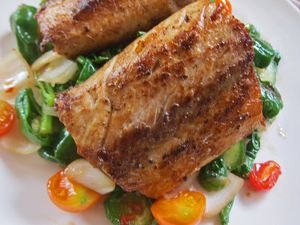 The difference was quite striking, as you could predict, the farmed fish, being much more fatty, was more delicate, it started flaking off. The flavor was really mild, though it was quite moist….this means, as a cook, you have bit more leeway. This was more of a fish for folks who don't like the flavor of fish….if you know what I mean. In other words, it will take on the flavor of how you season. It's not very flavorful.
The difference was quite striking, as you could predict, the farmed fish, being much more fatty, was more delicate, it started flaking off. The flavor was really mild, though it was quite moist….this means, as a cook, you have bit more leeway. This was more of a fish for folks who don't like the flavor of fish….if you know what I mean. In other words, it will take on the flavor of how you season. It's not very flavorful.
As I figured, the wild version was much more dense. You need to be on top of it because it will dry out. The flavor is a much more pronounced "white fish". With mild brine tones, you know you're eating fish.
What is interesting right now is; wild Yellowtail Amberjack goes for half the price of the farmed version! Of course, the season only lasts about three months. As it stands, if I'm cooking, I'll probably go with the wild…….though I'd probably enjoy a good, moist, fresh, sahimi grade Hiramasa at the sushi bar.
This was actually a nice little "project", Tommy comes through with the best suggestions as usual.
